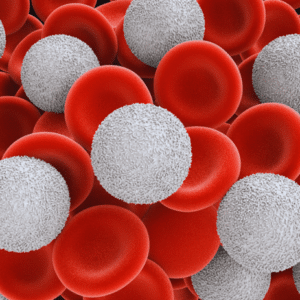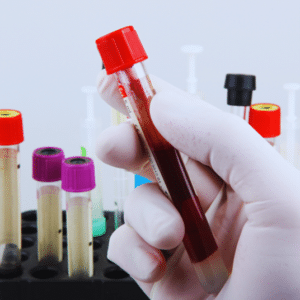In the realm of modern medicine, cell therapy represents one of the most promising advancements. It has revolutionized how doctors approach treatments for various conditions, especially those related to cancer and immune disorders.
A critical part of this process is leukapheresis, a procedure used to collect white blood cells. Let’s breakdown leukapheresis, its purpose, and how it fits into broader cell therapy treatments.
What Is Leukapheresis in Cell Therapy?
Leukapheresis is a specialized medical donation procedure that focuses on extracting white blood cells (leukocytes) from a patient’s blood. The term combines “leuko,” referring to white blood cells, and “apheresis,” which means to separate or withdraw.
In this procedure, blood is drawn from the body, passed through a machine that separates the white blood cells, and then returns the remaining blood components, such as red blood cells and plasma, back into the bloodstream.

This method is essential for collecting a large quantity of white blood cells, which can be used for a range of therapies, including cancer treatments, immune system modulation, and more CAR T-cell therapy.
The process is efficient and can typically be completed within a few hours in an outpatient setting.
The Role of Leukapheresis in Cell Therapy
Leukapheresis plays a vital role in several cutting-edge therapies, especially in the treatment of cancers like lymphoma and leukemia.
One of the most promising applications is in CAR T-cell therapy, where a patient’s white blood cells are collected, genetically modified, and then reintroduced into the body to target cancer cells more effectively.
Here’s how the process generally works:
- White Blood Cell Collection: Through leukapheresis, white blood cells are collected from the patient or a donor. These cells are crucial for developing targeted therapies that leverage the body’s immune response.
- Modification or Cultivation: Once collected, the cells are sent to a laboratory where they may be modified or cultivated to enhance their ability to fight specific diseases. In CAR T-cell therapy, for example, the T-cells (a type of white blood cell) are altered to seek out and destroy cancer cells.
- Reinfusion: After modification, the enhanced cells are infused back into the patient. These engineered cells then target harmful cells, like cancerous tumors, with increased precision and effectiveness.
Why Is Leukapheresis Important?
Leukapheresis is crucial for several reasons:
- Precision in Treatment: By collecting only white blood cells, leukapheresis enables medical professionals to target specific cells for advanced therapies. This precision reduces the risk of side effects and increases the chances of successful treatment.
- Personalized Medicine: Leukapheresis supports the move toward personalized medicine, where treatments are tailored to an individual’s unique biology. In many cases, the patient’s own cells are used, minimizing the risk of rejection.
- Research and Development: Leukapheresis has opened the door to research in gene therapies and immunotherapies that would have been impossible just a few decades ago. This process is crucial for developing treatments for previously untreatable conditions.

What to Expect During a Leukapheresis Procedure
Leukapheresis is generally safe and well-tolerated by patients, but understanding what to expect can help alleviate any concerns:
- Preparation: Prior to the procedure, your healthcare provider will check your blood counts and overall health to ensure you’re a good candidate for leukapheresis. You may also be given medications to help mobilize more white blood cells into your bloodstream.
- The Procedure Itself: You will be seated comfortably while blood is drawn from one arm, passed through the leukapheresis machine, and returned to your body via the other arm. The machine separates the white blood cells and collects them for further use. The process takes a few hours, depending on how many cells are needed.
- Post-Procedure Care: After the procedure, you may feel a bit fatigued, but most people return to their normal activities the same day.
The Benefits of Leukapheresis in Modern Medicine
The advancements in cell therapy, supported by leukapheresis, offer numerous benefits to patients and the broader medical community:
- Targeted Cancer Therapies: Perhaps the most well-known application of leukapheresis is in CAR T-cell therapy for certain types of cancer. This therapy has shown remarkable success rates, particularly in patients who have not responded to other treatments.
- Immune System Modulation: Leukapheresis is also used in treatments for autoimmune diseases like multiple sclerosis, where removing certain white blood cells can help reduce the body’s attack on its own tissues.
- Stem Cell Transplants: In some cases, leukapheresis is used to collect stem cells, which can be later used in bone marrow transplants. This is particularly beneficial for patients undergoing chemotherapy or radiation treatments, which can damage the bone marrow.
- Research and Clinical Trials: Leukapheresis is indispensable in clinical research and research studies. The procedure allows scientists to study the immune system more closely, leading to breakthroughs in gene therapy, immunotherapy, and other innovative treatments.
Looking Ahead: The Future of Cell Therapy

The demand for advanced therapies like CAR T-cell treatments continues to grow, as does the need for reliable leukapheresis procedures.
As research progresses, leukapheresis will undoubtedly remain at the forefront of personalized medicine and targeted cancer therapies.
As the medical community continues to explore and refine cell therapy techniques, there is great promise on the horizon for patients in need of advanced treatments.
Cell Therapy Services
Leukapheresis is a key step in the development of modern cell therapies, offering precision, personalization, and hope for treating some of the most challenging medical conditions.
QPS is heavily invested in cell therapy service lines, as understanding leukapheresis and its benefits can provide a valuable foundation for when these services become available. As technology and research advance, this procedure will likely play an even greater role in the future of medicine.
Stay up to date with our current and future clinical research trials to learn when leukapheresis may be available in our area.
